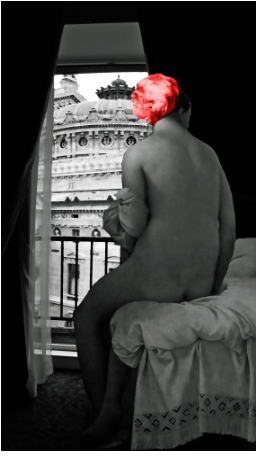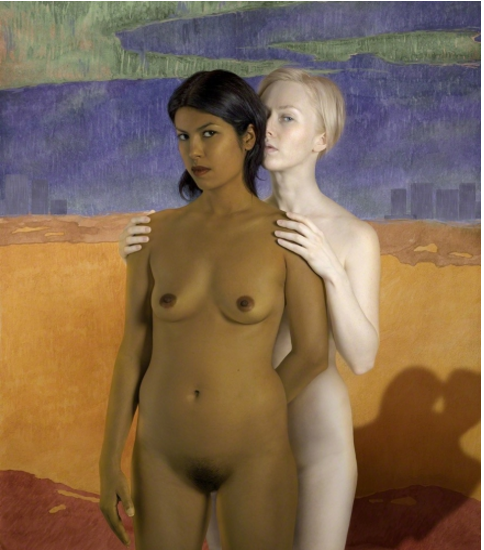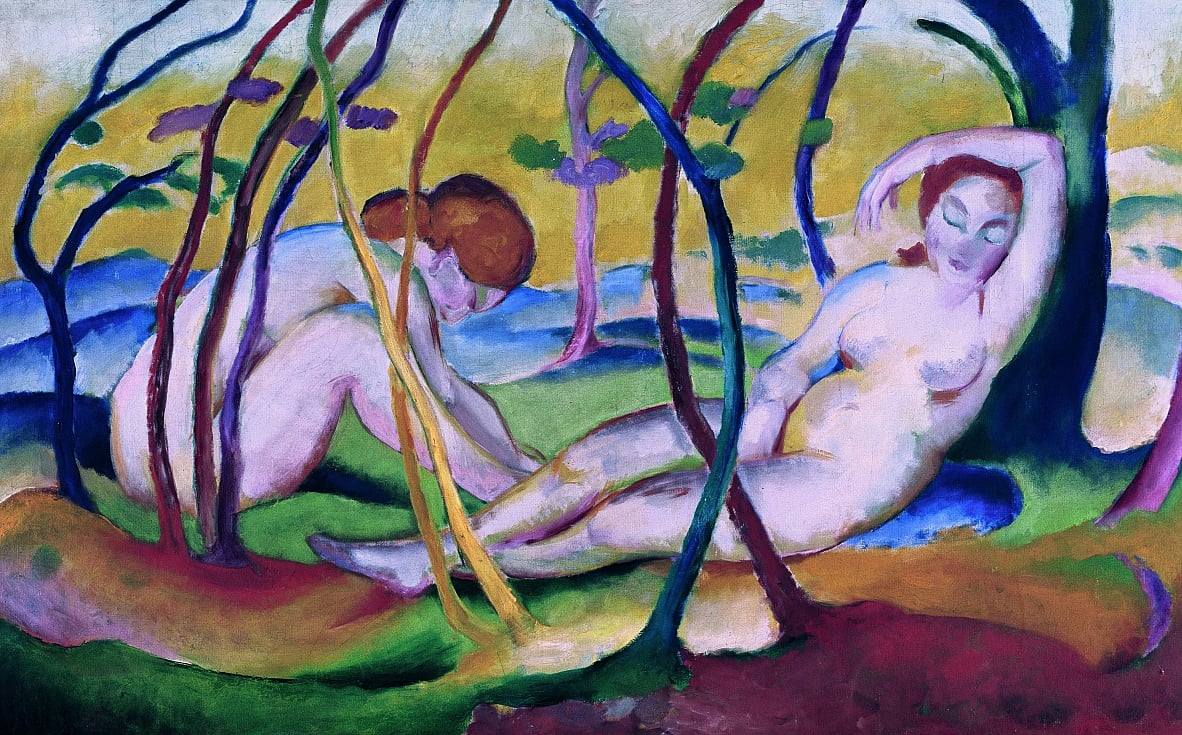
Contemporary nudes inspired by the history of art
In a more or less obvious way, several contemporary artists play with references from the history of art in their works. Nudes are not an exception to this trend! This month, Artsper proposes you to test your knowledge of nudes in the history of art… Through works of contemporary art that make direct reference to it ! Are you able to recognize the paintings of the masters that inspire the artists of today?
#1
Behind this almost kaleidoscopic nude by young photographer Manon Couse, there is a reference to a Renaissance masterpiece whose author is unknown… It is indeed a very contemporary version of the painting “Grabrielle d’Estrées and One of Her Sisters”, done by a painter of the Fontainebleau School whose name has not been revealed. Manon Couse took the main elements, physical and gestural characteristics, but asserts its erotic character. In fact, according to a widespread hypothesis about the original painting, the gesture of Gabrielle d’Estrée’s sister is not erotic at all, it evokes the birth of a future child.

#2
Posture, shapes, turban… Have you ever seen the woman in this picture by Franck Doat before? No you are not dreaming ! This woman is the same from the painting by painter Jean-Auguste-Dominique Ingres “The Valpinçon Bather” (1808). Completely decontextualized by Franck Doat, she is part of a surrealist photographic montage, having as backdrop the Garnier Palace. For the record, Ingres himself used this model and her pose in several of his pieces, changing only small details… We can also find her for example in “The Small Bather-Interior of the Harem” (1828) or in his famous piece “The Turkish Bath” (1862).
#3
In this piece the reference is more discreet… However, Russian artist Katerina Belkina undoubtedly echoes the piece by painter Paul Gauguin in this contemporary photograph. Colors and pauses resonate indeed with the paintings of the master painted during his trip to Tahiti. The title of the photograph by Katerina Belkina, For Gauguin, completely removes any doubt, even if in this case also, the contemporary piece accentuates the sensual and erotic aspect. In general, Katerina Belkina’s artistic approach is mainly focused on paying a tribute to the master painters, where she includes herself. For Khalo, For Picasso, and For Malevitch are just some of her pieces, among several others.

#4
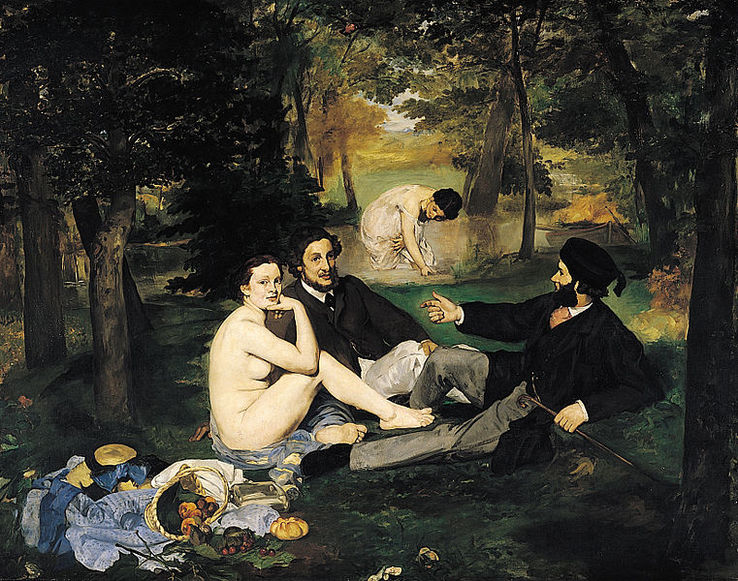
On her side, Catherine Théry uses the masterpieces of the history of art to revisit the place of women in society and in history. She depicts Barbie dolls, recreating in miniature famous paintings inhabited by these (women-dolls). In the photograph above, Catherine Théry recreates the famous piece “Lunch on the Grass” by Edouard Manet. The painter’s canvas had particularly shocked during its exposition in 1863, since the nude does not have any allegorical or mythological motive, in this piece, which were the only reasons authorizing such a representation at that time. In addition, the proximity of the naked woman to two dressed men, and the overturned basket of fruits, were perceived at that time as an obscene composition. In her photograph, Catherine Théry seems to have grasped this suggestive and provocative aspect, depicting a Barbie with masculine codes, which seems to assume complete sexual freedom.
#5
Recognize it? In this piece, the emblematic street artist, Jerome Mesnager reinterprets “Liberty Leading the people” by Eugene Delacroix. With his brush, the woman, an allegory of freedom in the canvas by Delacroix, is completely naked. She takes the form of the famous “white men” characteristic of the contemporary artist’s work. Symbols of light, strength and peace, the latter perfectly replicate this masterpiece, which embodies the revolutionary ideal and the struggle for freedom, reminding us also that today, this struggle is still going on.
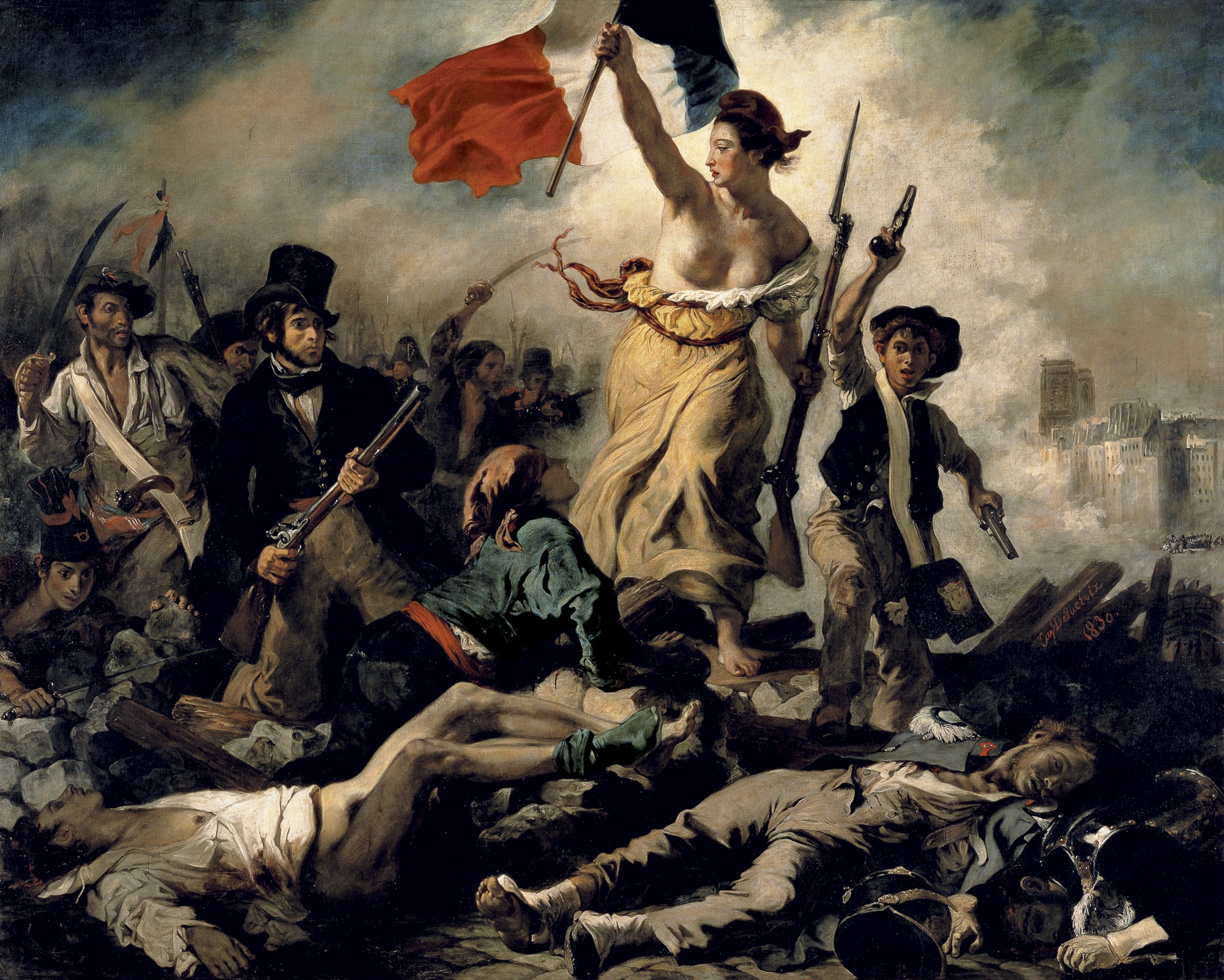

About Artsper
Founded in 2013, Artsper is an online marketplace for contemporary art. Partnering with 1,800 professional art galleries around the world, it makes discovering and acquiring art accessible to all.
Learn more












